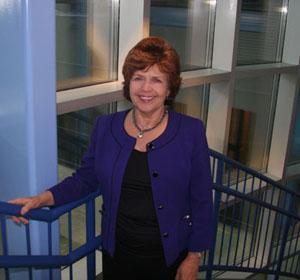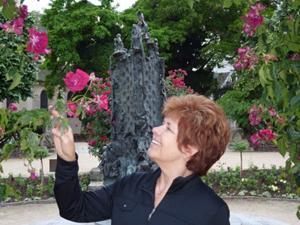Meet EPA Scientist Cynthia Yund, Ph.D.

Update: While this researcher no longer works at EPA, our science builds on the work they did during their time here.
Dr. Yund received her doctorate in Environmental Health from the division of Epidemiology at the University of Cincinnati. Her areas of expertise include community health, injury epidemiology, and bio-terror preparedness. She has served as an educator and consultant for nurses, physicians, and other health care providers in the areas of staff development, school health, injury epidemiology, issues on aging, communicable disease investigation, syndromic surveillance, vital statistics, and program development and evaluation, and risk communication.
Currently Dr. Yund is an Environmental Health Scientist with the National Homeland Security Research Center at the EPA. Her current projects involve several aspects of risk assessment and risk communication.
How does your science matter?
My science matters because public health is important. The systematic way to build and organize knowledge gives an understanding for health protection. Communicating findings is a critical element in changing behavior to have a positive impact on public health.
My current research is in crisis and emergency risk communication. Our focus is to develop effective risk communication strategies for post-incident decontamination and clearance activities. These strategies address stakeholders, media, and public needs. My specialty is epidemiology, which is the study of the causes and effects of diseases in populations. I look at data to determine if there are patterns linked to health outcomes or health behaviors.
If you could have dinner with any scientist, past or present, who would you choose and what would you ask them?
I think I'd pick one of the inventors that helped with our industrial revolution, either Ben Franklin or Thomas Edison. I'd love to understand how they came up with their ideas and the process they followed to make those ideas become usable products out in the world.
Tell us about your background.
I have a Bachelors degree in nursing from the Ohio State University. My first job was taking care of babies in the intensive care unit at a hospital. I later obtained my Masters degree in Pediatric Nursing from the University of Cincinnati. I also received my Ph.D. from the University of Cincinnati in Environmental Health Science.
What do you like most about your research?
I like working with statistics and numbers. Information has to be collected, translated and analyzed in a way that makes sense and that's kind of what I do, analyze it and look for associations, patterns in the information. That's what I like most about my research.

How did you get started at EPA?
After I received my doctorate, I became the Director of Epidemiology and Assessment at the Hamilton County General Health District.
When the Homeland Security Research Center began at EPA, they were looking for community involvement in a water security project they were starting. I worked on that and later got to EPA when a job was available to work on that program. So, I was in the right place at the right time.
When did you first know you wanted to be scientist?
I was always interested in science and did well in science and math classes. My father is a scientist so I grew up with it. I liked learning and the scientific method made sense to me, it's how I think. Over Christmas break, my family would have competitive puzzle-solving challenges and solving puzzles is still something I do today at work.
If you were not a scientist, what would you be doing?
I would go back to working as a nurse.
Any advice for students considering a career in science?
Go for it! It's important to learn the basic principles behind scientific reasoning because although technology is always changing, the knowledge of those basic scientific principles will continue to guide you.
Editor's Note: The opinions expressed herein are those of the researcher alone. EPA does not endorse the opinions or positions expressed.
